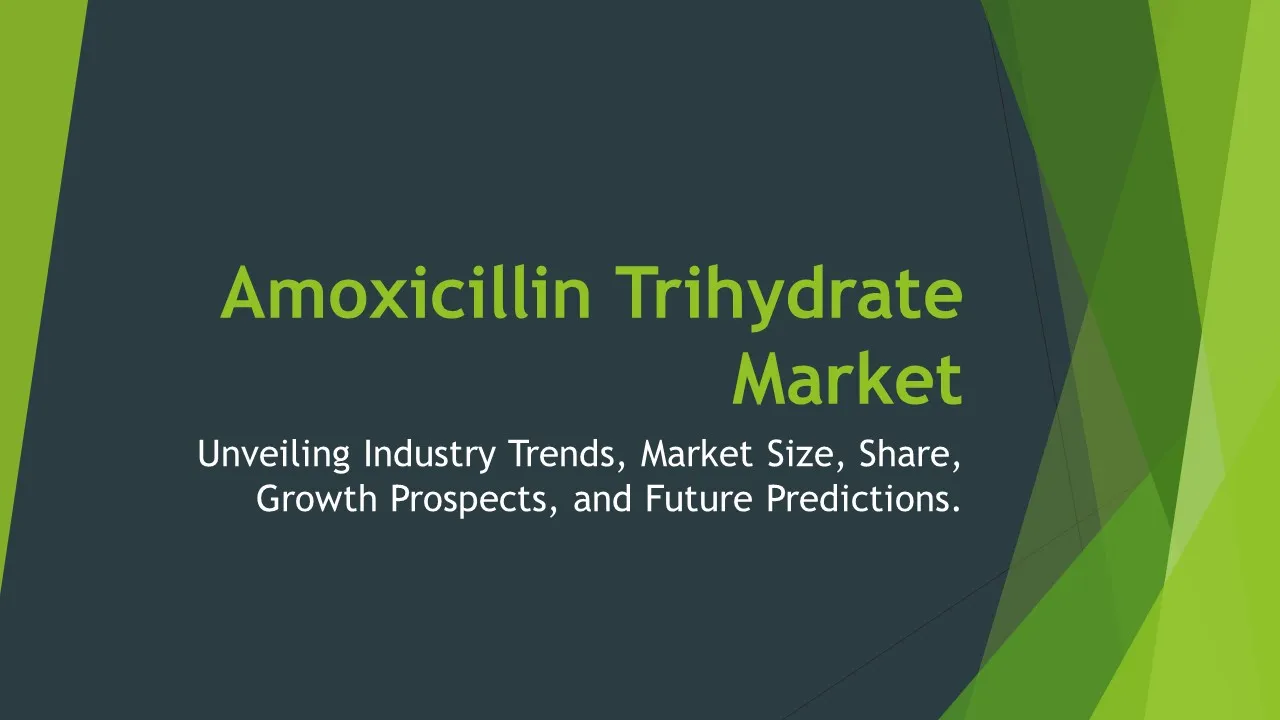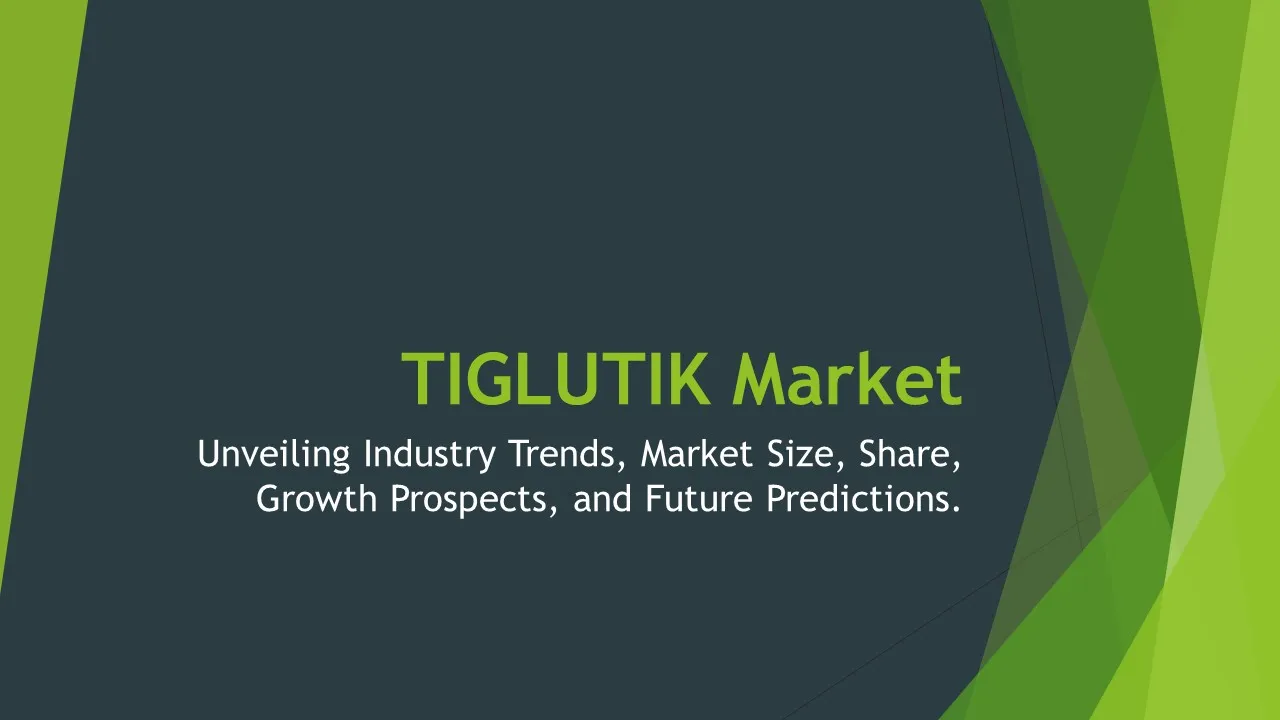Heparin Active Pharmaceutical Ingredients
Heparin Active Pharmaceutical Ingredients Market Segments - by Product Type (Unfractionated Heparin, Low Molecular Weight Heparin), Application (Anticoagulant, Antithrombotic), Distribution Channel (Hospital Pharmacies, Retail Pharmacies, Online Pharmacies), Ingredient Type (Animal-derived Heparin, Synthetic Heparin), and Region (North America, Europe, Asia Pacific, Latin America, Middle East & Africa) - Global Industry Analysis, Growth, Share, Size, Trends, and Forecast
- Report Preview
- Table Of Content
- Segments
- Methodology
Heparin Active Pharmaceutical Ingredients Market Outlook
The Heparin Active Pharmaceutical Ingredients (APIs) market is projected to reach a valuation of approximately USD 6 billion by 2033, growing at a Compound Annual Growth Rate (CAGR) of around 5% during the forecast period from 2025 to 2033. This growth is primarily driven by the increasing prevalence of cardiovascular diseases, which necessitate the use of anticoagulant medications like heparin. Additionally, the rising number of surgical procedures, where anticoagulation therapy plays a vital role in preventing thromboembolic complications, is further fueling the demand for heparin APIs. Moreover, advancements in manufacturing techniques and increased production capacities are contributing to the overall growth of this market. As healthcare systems globally evolve to address these challenges, the Heparin APIs market is poised for significant expansion in the coming years.
Growth Factor of the Market
The growth of the Heparin Active Pharmaceutical Ingredients market is significantly influenced by several factors that enhance its demand across various healthcare sectors. Firstly, the rising incidence of venous thromboembolism (VTE) and other thrombotic disorders has led to an increased prescription of heparin, both unfractionated and low molecular weight types, driving the demand for APIs. Secondly, improvements in healthcare infrastructure and increased investment in research and development are fostering the creation of more effective heparin formulations, which are essential for treating a variety of medical conditions. Furthermore, the growing elderly population, who are more susceptible to cardiovascular diseases, is projected to boost market growth. Additionally, the ongoing advancements in biotechnology and the development of synthetic heparin alternatives are opening new avenues for market expansion. Finally, the rising trend of self-administration of anticoagulants, particularly in home healthcare settings, is propelling the demand for accessible heparin products.
Key Highlights of the Market
- Projected market valuation of USD 6 billion by 2033.
- CAGR of approximately 5% from 2025 to 2033.
- Increased prevalence of cardiovascular diseases driving demand.
- Significant advancements in heparin manufacturing technologies.
- Growing elderly population contributing to market growth.
By Product Type
Unfractionated Heparin:
Unfractionated Heparin (UFH) remains a critical player in the Heparin APIs market due to its widespread use in hospitals and surgical settings. This type of heparin is preferred for its rapid anticoagulant effects, which are essential for immediate treatment in patients undergoing major surgeries or those requiring hemodialysis. UFH is administered intravenously or subcutaneously, allowing for quick dose adjustments based on patient response. Its ability to provide immediate anticoagulation makes it invaluable in acute care settings, where the risk of thrombosis is heightened. However, the challenges associated with monitoring and the risk of bleeding complications have led to the gradual shift towards low molecular weight heparins in some cases. Nonetheless, UFH remains a staple due to its versatility and effectiveness, ensuring its continued prominence in the market.
Low Molecular Weight Heparin:
Low Molecular Weight Heparin (LMWH) has gained substantial popularity in recent years due to its improved safety profile and ease of use compared to unfractionated heparin. LMWH is characterized by its predictable pharmacokinetics, which eliminates the need for routine monitoring, making it a preferred choice for outpatient treatment of conditions like deep vein thrombosis (DVT) and pulmonary embolism (PE). The convenience of subcutaneous administration and the reduced risk of heparin-induced thrombocytopenia (HIT) have contributed to its growing market share. This segment is anticipated to experience robust growth as healthcare professionals increasingly recognize the benefits of LMWH in long-term anticoagulation therapy. Furthermore, ongoing clinical research into its applications for various indications is likely to further drive demand for LMWH in the foreseeable future.
By Application
Anticoagulant:
In the application segment, the anticoagulant category represents the largest share of the Heparin APIs market. Anticoagulants play a crucial role in preventing blood clots in patients at risk of thromboembolic events, such as those with atrial fibrillation or undergoing major surgeries. Heparin, both unfractionated and low molecular weight, is one of the most commonly prescribed anticoagulants, owing to its rapid action and ability to be tailored to individual patient needs. The rising incidence of thrombotic disorders and an increasing awareness of the importance of anticoagulation therapy in preventive medicine are driving the demand in this segment. As healthcare systems continue to prioritize the management of cardiovascular risks, the anticoagulant application of heparin APIs is expected to witness sustained growth.
Antithrombotic:
The antithrombotic application segment is also experiencing significant growth within the Heparin Active Pharmaceutical Ingredients market. Antithrombotic agents are vital in reducing the risk of thrombus formation, especially during surgical procedures and in patients with comorbidities that predispose them to clot formation. Heparin's role as an antithrombotic agent is well-established, and ongoing clinical studies continue to explore its efficacy in various patient populations. The increasing number of elective surgeries and advancements in surgical techniques are propelling the demand for heparin in this application. Moreover, the rising awareness of thromboembolism and its risks has led to an increase in the use of antithrombotic therapies, thus contributing to the market's growth.
By Distribution Channel
Hospital Pharmacies:
Hospital pharmacies represent a significant distribution channel for Heparin Active Pharmaceutical Ingredients, as hospitals are primary centers for the administration of heparin products. The presence of trained healthcare professionals and the ability to provide immediate patient care make hospital pharmacies a crucial component of the healthcare supply chain. Heparin is often dispensed to patients undergoing surgery or treatment for thromboembolic disorders, where immediate access to anticoagulants is imperative. The growth of this segment is closely tied to the overall increase in hospital admissions and surgical procedures, which have surged in recent years due to an aging population and rising prevalence of chronic diseases. Furthermore, the integration of technology in hospital pharmacy operations is enhancing inventory management and ensuring the timely availability of heparin products for patient care.
Retail Pharmacies:
Retail pharmacies are increasingly becoming an important distribution channel for Heparin Active Pharmaceutical Ingredients, particularly as the trend towards self-administration of medications rises. Patients with chronic conditions, such as those requiring long-term anticoagulation therapy, often seek to manage their medications independently. Retail pharmacies offer convenient access to both prescription and over-the-counter heparin products, catering to the needs of a growing patient population. Additionally, the expansion of retail pharmacy chains and collaborations with healthcare providers are enhancing the availability of heparin products in community settings. The increasing consumer preference for accessible healthcare options and the growing awareness of thromboembolic conditions are expected to contribute to the retail pharmacy segment's growth in the Heparin APIs market.
Online Pharmacies:
The online pharmacies distribution channel is emerging as a vital segment within the Heparin Active Pharmaceutical Ingredients market. The convenience of ordering medications online has gained immense popularity among patients, particularly during the COVID-19 pandemic, which accelerated the adoption of digital health solutions. Online pharmacies provide patients with the ability to order heparin products discreetly, enhancing adherence to prescribed treatment regimens. Furthermore, the competitive pricing and home delivery options available through online platforms are attractive to consumers. As regulatory frameworks evolve to facilitate the growth of online pharmacies, this segment is likely to expand significantly, driven by increased consumer trust and the shift towards digital healthcare services.
By Ingredient Type
Animal-derived Heparin:
Animal-derived heparin, primarily sourced from porcine intestinal mucosa, is the most commonly used heparin type in the market. This form of heparin has a long history of clinical use and is recognized for its efficacy as an anticoagulant agent. The production process for animal-derived heparin is well-established, ensuring consistent quality and availability. However, concerns regarding the potential risk of disease transmission and ethical considerations associated with animal sourcing have led to increased scrutiny within the healthcare industry. Despite these challenges, the demand for animal-derived heparin continues to be robust due to its proven track record and the absence of viable synthetic alternatives that can match its effectiveness in various clinical applications.
Synthetic Heparin:
Synthetic heparin is gaining traction as a potential alternative to traditional animal-derived heparin, driven by the need for safer and more consistent anticoagulant options. With advancements in biotechnology and synthetic chemistry, researchers are developing heparin-like molecules that mimic the anticoagulant properties of natural heparin without the associated risks of animal sourcing. Synthetic heparin offers several advantages, including lower variability in potency and fewer immunogenic reactions, which are significant concerns with animal-derived products. Although still in the early stages of commercial development, the growth potential for synthetic heparin is considerable, particularly as regulatory bodies become more favorable towards innovative pharmaceutical solutions. As research continues and production methods improve, synthetic heparin could play a vital role in the future landscape of the Heparin APIs market.
By Region
The Heparin Active Pharmaceutical Ingredients market exhibits significant regional variations, with North America holding the largest share due to advanced healthcare infrastructure and a high prevalence of cardiovascular diseases. In North America, the market is projected to witness a CAGR of around 4% from 2025 to 2033, driven by increased healthcare expenditure and growing awareness of anticoagulation therapies. The presence of key pharmaceutical companies and a well-established regulatory framework further enhance the market dynamics in this region. Meanwhile, Europe is expected to follow closely, supported by the rising adoption of anticoagulant therapies among an aging population and increasing surgical procedures across member states.
In Asia Pacific, the Heparin APIs market is expected to experience the highest growth rate due to the expanding healthcare infrastructure and rising disposable incomes. Countries such as China and India are witnessing a surge in the prevalence of lifestyle-related diseases, which in turn drives the demand for anticoagulants like heparin. The Latin America and Middle East & Africa regions are also projected to contribute to market growth, albeit at a slower pace compared to the other regions. Factors such as improving healthcare access and rising awareness about thromboembolic disorders are expected to positively impact market dynamics in these regions, creating a more favorable environment for the growth of heparin APIs.
Opportunities
The Heparin Active Pharmaceutical Ingredients market presents numerous opportunities for growth, particularly in the areas of research and development. With the increasing focus on personalized medicine, there is a growing demand for tailored anticoagulant therapies that take individual patient profiles into account. This presents an opportunity for pharmaceutical companies to invest in the development of innovative heparin formulations that address specific therapeutic needs, such as dosage adjustments based on genetic factors or coexisting medical conditions. Furthermore, the potential for expanding heparin's application in new therapeutic areas, such as oncology and obstetrics, could open additional market avenues, driving demand for heparin APIs significantly.
Additionally, the global shift towards telemedicine and digital health solutions creates an opportunity for online pharmacies and direct-to-consumer heparin products. As healthcare systems adapt to the changing landscape, pharmaceutical companies can leverage technology to enhance patient engagement and adherence to anticoagulant therapy. The integration of digital health tools, such as mobile applications for medication reminders and monitoring, can improve patient outcomes and increase the overall demand for heparin products. These evolving dynamics in the market present a promising landscape for innovative solutions, allowing stakeholders to capitalize on the growth potential of the Heparin APIs market.
Threats
Despite the positive outlook for the Heparin Active Pharmaceutical Ingredients market, several threats could impede growth. One of the primary concerns is the stringent regulatory environment governing the production and distribution of pharmaceutical ingredients. Compliance with regulatory standards can be challenging, particularly for smaller manufacturers who may lack the necessary resources and expertise. Additionally, changes in regulations and increased scrutiny can lead to disruptions in supply chains, affecting the availability of heparin products in the market. Furthermore, the emergence of generic alternatives and biosimilars poses a significant threat to established heparin products, as healthcare providers may opt for cost-effective options. This increase in market competition can reduce profit margins for existing players, leading to a potential decline in overall market growth.
Moreover, the ongoing concerns about the safety and efficacy of animal-derived heparin, particularly in light of potential disease transmission risks, can also act as a restraining factor. As patients and healthcare providers become more proactive in seeking safer alternatives, the demand for synthetic heparin and other non-animal-derived options may grow, further challenging the market for traditional heparin APIs. The ability of companies to innovate and adapt to these changing market dynamics will be crucial in mitigating these threats and ensuring their continued relevance in the Heparin APIs market.
Competitor Outlook
- Sanofi
- Baxter International Inc.
- Pfizer Inc.
- Teva Pharmaceutical Industries Limited
- GlaxoSmithKline plc
- Novartis AG
- Johnson & Johnson
- Amgen Inc.
- Fresenius Kabi AG
- Dr. Reddy's Laboratories
- Lupin Pharmaceuticals
- Apotex Inc.
- Hikma Pharmaceuticals PLC
- NeoPharm Co., Ltd.
- Hua Medicine (Shanghai) Limited
The competitive landscape of the Heparin Active Pharmaceutical Ingredients market is characterized by a mix of established pharmaceutical giants and emerging players. Leading companies, such as Sanofi and Baxter International, have a stronghold in the market due to their extensive portfolios and established distribution channels. These firms continue to invest heavily in research and development to enhance their product offerings and maintain their competitive edge. In addition, these companies leverage their global reach to secure market presence across multiple regions, ensuring that they can meet the growing demand for heparin APIs effectively. Competitive strategies include mergers and acquisitions aimed at expanding product lines and entering new markets, which further solidifies their positions in the industry.
Moreover, the market is witnessing a rise in the number of biotechnology firms focusing on the development of synthetic heparin alternatives. Companies such as Amgen and GlaxoSmithKline are investing in innovative solutions that promise to address safety concerns associated with traditional heparin products. The entry of these new players into the market could challenge the status quo, pushing established companies to adapt and evolve their strategies. Additionally, collaborations between pharmaceutical companies and research institutions are becoming increasingly common, facilitating the development of novel heparin formulations and applications. This collaborative approach is significant for addressing the unmet medical needs of patients, thereby driving innovation in the Heparin APIs market.
Key companies such as Pfizer Inc. and Teva Pharmaceutical Industries Limited are also making significant strides in the Heparin APIs market by focusing on expanding their portfolios through strategic partnerships and product expansions. These companies understand the importance of aligning their research efforts with changing market dynamics and patient needs. For instance, Pfizer has been actively involved in clinical trials to explore the efficacy of heparin in various therapeutic areas beyond traditional anticoagulation, which could open new revenue streams. Teva, on the other hand, is leveraging its generic expertise to offer cost-effective heparin solutions, catering to the growing demand for affordable medication options. This strategic focus on innovation and affordability will be instrumental in shaping the future competitive landscape of the Heparin APIs market.
1 Appendix
- 1.1 List of Tables
- 1.2 List of Figures
2 Introduction
- 2.1 Market Definition
- 2.2 Scope of the Report
- 2.3 Study Assumptions
- 2.4 Base Currency & Forecast Periods
3 Market Dynamics
- 3.1 Market Growth Factors
- 3.2 Economic & Global Events
- 3.3 Innovation Trends
- 3.4 Supply Chain Analysis
4 Consumer Behavior
- 4.1 Market Trends
- 4.2 Pricing Analysis
- 4.3 Buyer Insights
5 Key Player Profiles
- 5.1 Sanofi
- 5.1.1 Business Overview
- 5.1.2 Products & Services
- 5.1.3 Financials
- 5.1.4 Recent Developments
- 5.1.5 SWOT Analysis
- 5.2 Amgen Inc.
- 5.2.1 Business Overview
- 5.2.2 Products & Services
- 5.2.3 Financials
- 5.2.4 Recent Developments
- 5.2.5 SWOT Analysis
- 5.3 Apotex Inc.
- 5.3.1 Business Overview
- 5.3.2 Products & Services
- 5.3.3 Financials
- 5.3.4 Recent Developments
- 5.3.5 SWOT Analysis
- 5.4 Novartis AG
- 5.4.1 Business Overview
- 5.4.2 Products & Services
- 5.4.3 Financials
- 5.4.4 Recent Developments
- 5.4.5 SWOT Analysis
- 5.5 Pfizer Inc.
- 5.5.1 Business Overview
- 5.5.2 Products & Services
- 5.5.3 Financials
- 5.5.4 Recent Developments
- 5.5.5 SWOT Analysis
- 5.6 Fresenius Kabi AG
- 5.6.1 Business Overview
- 5.6.2 Products & Services
- 5.6.3 Financials
- 5.6.4 Recent Developments
- 5.6.5 SWOT Analysis
- 5.7 Johnson & Johnson
- 5.7.1 Business Overview
- 5.7.2 Products & Services
- 5.7.3 Financials
- 5.7.4 Recent Developments
- 5.7.5 SWOT Analysis
- 5.8 NeoPharm Co., Ltd.
- 5.8.1 Business Overview
- 5.8.2 Products & Services
- 5.8.3 Financials
- 5.8.4 Recent Developments
- 5.8.5 SWOT Analysis
- 5.9 GlaxoSmithKline plc
- 5.9.1 Business Overview
- 5.9.2 Products & Services
- 5.9.3 Financials
- 5.9.4 Recent Developments
- 5.9.5 SWOT Analysis
- 5.10 Lupin Pharmaceuticals
- 5.10.1 Business Overview
- 5.10.2 Products & Services
- 5.10.3 Financials
- 5.10.4 Recent Developments
- 5.10.5 SWOT Analysis
- 5.11 Dr. Reddy's Laboratories
- 5.11.1 Business Overview
- 5.11.2 Products & Services
- 5.11.3 Financials
- 5.11.4 Recent Developments
- 5.11.5 SWOT Analysis
- 5.12 Baxter International Inc.
- 5.12.1 Business Overview
- 5.12.2 Products & Services
- 5.12.3 Financials
- 5.12.4 Recent Developments
- 5.12.5 SWOT Analysis
- 5.13 Hikma Pharmaceuticals PLC
- 5.13.1 Business Overview
- 5.13.2 Products & Services
- 5.13.3 Financials
- 5.13.4 Recent Developments
- 5.13.5 SWOT Analysis
- 5.14 Hua Medicine (Shanghai) Limited
- 5.14.1 Business Overview
- 5.14.2 Products & Services
- 5.14.3 Financials
- 5.14.4 Recent Developments
- 5.14.5 SWOT Analysis
- 5.15 Teva Pharmaceutical Industries Limited
- 5.15.1 Business Overview
- 5.15.2 Products & Services
- 5.15.3 Financials
- 5.15.4 Recent Developments
- 5.15.5 SWOT Analysis
- 5.1 Sanofi
6 Market Segmentation
- 6.1 Heparin Active Pharmaceutical Ingredients Market, By Application
- 6.1.1 Anticoagulant
- 6.1.2 Antithrombotic
- 6.2 Heparin Active Pharmaceutical Ingredients Market, By Product Type
- 6.2.1 Unfractionated Heparin
- 6.2.2 Low Molecular Weight Heparin
- 6.3 Heparin Active Pharmaceutical Ingredients Market, By Ingredient Type
- 6.3.1 Animal-derived Heparin
- 6.3.2 Synthetic Heparin
- 6.4 Heparin Active Pharmaceutical Ingredients Market, By Distribution Channel
- 6.4.1 Hospital Pharmacies
- 6.4.2 Retail Pharmacies
- 6.4.3 Online Pharmacies
- 6.1 Heparin Active Pharmaceutical Ingredients Market, By Application
7 Competitive Analysis
- 7.1 Key Player Comparison
- 7.2 Market Share Analysis
- 7.3 Investment Trends
- 7.4 SWOT Analysis
8 Research Methodology
- 8.1 Analysis Design
- 8.2 Research Phases
- 8.3 Study Timeline
9 Future Market Outlook
- 9.1 Growth Forecast
- 9.2 Market Evolution
10 Geographical Overview
- 10.1 Europe - Market Analysis
- 10.1.1 By Country
- 10.1.1.1 UK
- 10.1.1.2 France
- 10.1.1.3 Germany
- 10.1.1.4 Spain
- 10.1.1.5 Italy
- 10.1.1 By Country
- 10.2 Asia Pacific - Market Analysis
- 10.2.1 By Country
- 10.2.1.1 India
- 10.2.1.2 China
- 10.2.1.3 Japan
- 10.2.1.4 South Korea
- 10.2.1 By Country
- 10.3 Latin America - Market Analysis
- 10.3.1 By Country
- 10.3.1.1 Brazil
- 10.3.1.2 Argentina
- 10.3.1.3 Mexico
- 10.3.1 By Country
- 10.4 North America - Market Analysis
- 10.4.1 By Country
- 10.4.1.1 USA
- 10.4.1.2 Canada
- 10.4.1 By Country
- 10.5 Middle East & Africa - Market Analysis
- 10.5.1 By Country
- 10.5.1.1 Middle East
- 10.5.1.2 Africa
- 10.5.1 By Country
- 10.6 Heparin Active Pharmaceutical Ingredients Market by Region
- 10.1 Europe - Market Analysis
11 Global Economic Factors
- 11.1 Inflation Impact
- 11.2 Trade Policies
12 Technology & Innovation
- 12.1 Emerging Technologies
- 12.2 AI & Digital Trends
- 12.3 Patent Research
13 Investment & Market Growth
- 13.1 Funding Trends
- 13.2 Future Market Projections
14 Market Overview & Key Insights
- 14.1 Executive Summary
- 14.2 Key Trends
- 14.3 Market Challenges
- 14.4 Regulatory Landscape
Segments Analyzed in the Report
The global Heparin Active Pharmaceutical Ingredients market is categorized based on
By Product Type
- Unfractionated Heparin
- Low Molecular Weight Heparin
By Application
- Anticoagulant
- Antithrombotic
By Distribution Channel
- Hospital Pharmacies
- Retail Pharmacies
- Online Pharmacies
By Ingredient Type
- Animal-derived Heparin
- Synthetic Heparin
By Region
- North America
- Europe
- Asia Pacific
- Latin America
- Middle East & Africa
Key Players
- Sanofi
- Baxter International Inc.
- Pfizer Inc.
- Teva Pharmaceutical Industries Limited
- GlaxoSmithKline plc
- Novartis AG
- Johnson & Johnson
- Amgen Inc.
- Fresenius Kabi AG
- Dr. Reddy's Laboratories
- Lupin Pharmaceuticals
- Apotex Inc.
- Hikma Pharmaceuticals PLC
- NeoPharm Co., Ltd.
- Hua Medicine (Shanghai) Limited
- Publish Date : Jan 21 ,2025
- Report ID : PH-67511
- No. Of Pages : 100
- Format : |
- Ratings : 4.5 (110 Reviews)









